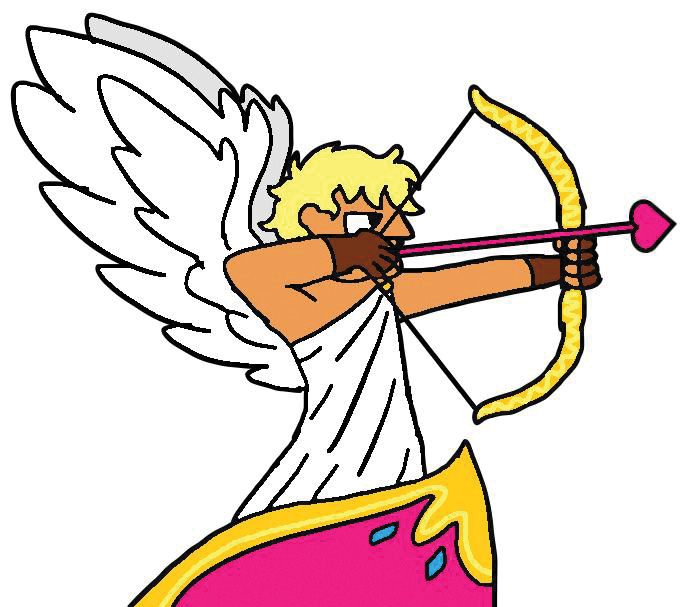Discover Love Deities From Around the World
February 3, 2023
One of the many enduring symbols of Valentine’s Day is none other than the winged, projectile-wielding baby, otherwise known as Cupid. However, Cupid didn’t start out looking like the icon most people know and love today. In fact, there are plenty of other deities with love as the realm they oversee that deserve just as much recognition this Valentine’s Day.
In ancient Rome, Cupid (known as Eros in Greek mythology) is commonly stated to be the son of Mars, the god of war, and Venus, the goddess of love. However, stories about his parentage vary. Eros uses his bow and golden arrows to strike love into peoples’ hearts, as well as leaded arrows to generate hate. He often uses these tools to toy with the emotions of mortals and other gods, as per the History Channel (history.com).
Hathor, in Egyptian mythology, resides over many domains, including the sky, beauty, and love. She is often considered the protector of women, and was one of the most widely worshiped deities. According to a website about ancient Egypt, “In her role as goddess of beauty, she was the patron of cosmetics. Wearing cosmetics was seen as a form of worship to Hathor, and offerings of mirrors or cosmetic palettes to her were common” (egyptianmuseum.org).
In Chinese mythology, Yue Lao, sometimes called “The Old Man Under the Moon” or “The Matchmaker,” wields a book of marriages and ties a red string onto the partner that one is meant to be with. People across Asia continue to pray at statues of him to this day, in hopes of meeting their future love. According to the Cable News Network (CNN), “The story goes that during the Tang Dynasty (618-907 AD), a man asked the Love God to show him his future wife. But he didn’t believe the Love God and had the girl attacked. But in the future, when he actually met his wife, she had a scar from that same attack” (cnn.com).
The Mesoamerican god Xochipilli oversees summer, flowers, love, and creativity. Worshiped by the Aztecs, he was often given corn or pulque (an alcoholic beverage made of sap from the maguey) as an offering at festivals in his honor. In Aztec mythology, he and his two brothers represent happiness, pleasure, and health (worldhistory.org).
The Hindu god Kama (also known as Kamadeva) is the god of erotic love and pleasure. According to Britannica, “During the Vedic age (second millennium–seventh century BCE), he personified cosmic desire, or the creative impulse, and was called the firstborn of the primeval Chaos that makes all creation possible. In later periods he is depicted as a handsome youth, attended by heavenly nymphs, who shoots love-producing flower-arrows. His bow is of sugarcane, his bowstring a row of bees” (britannica.com).
“It’s important to study such legends and myths because of the great influence they have had over the course of history,” said Senior Anaisabel Badillo. “They are the bases of many newer stories. Without them, the narratives and themes found in the modern day would be vastly different. Such change would affect our perception of the world,” said Badillo.
These are merely a few of the many love deities present in civilizations across the globe. While Cupid may be the love god that most people think of on Valentine’s Day, he may not be the only one causing people to fall in love (or break up) with each other this February.


